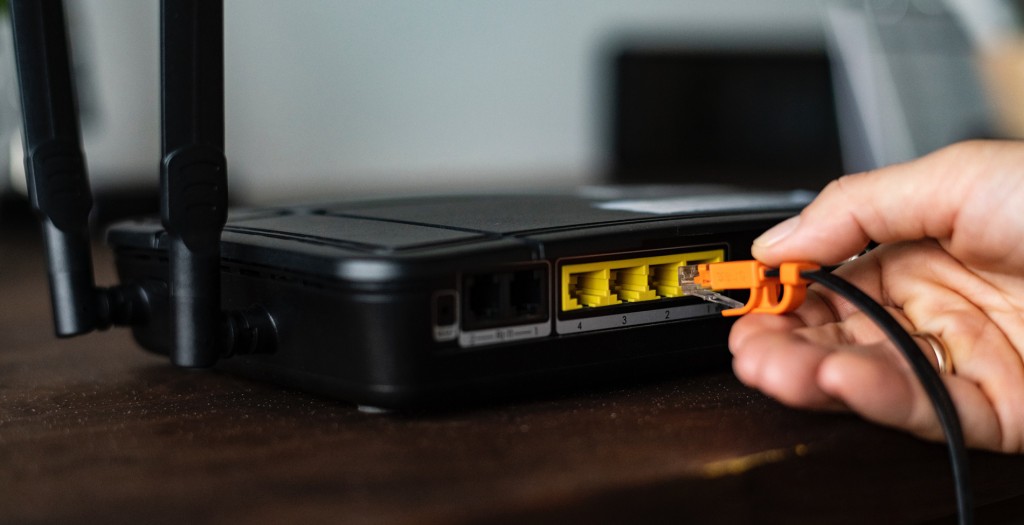
Unhappy with your Wi-Fi signal? It might be time to ditch the dead zones and relocate your router! This guide explores how strategic router placement can optimize your home network, and equips you with the know-how for a seamless move.
Key Takeaways
- Strategic router placement can significantly improve Wi-Fi signal strength and coverage.
- Consider central placement, minimizing obstructions, and avoiding signal-interfering devices.
- Explore alternatives like wireless access points and powerline adapters for extended coverage.
Q: How can I improve my Wi-Fi signal by moving my router?
A: Moving your router to a central location, minimizing obstructions, and avoiding signal-interfering devices can significantly improve your Wi-Fi signal strength and coverage. Consider using wireless access points or powerline adapters for extended coverage in your home.
How annoying is slow internet?
Constantly waiting for things to load can be a pain in the neck.
Especially when you are in a hurry.
And don’t get us started on WiFi drop zones!
Those little areas of your house where the internet doesn’t quite reach. Annoying, right?
But it doesn’t have to be this way.
There are loads of ways to increase your internet speed. Some are expensive, but some are completely free.
Did you know moving your router affects internet speed and coverage?
Well, it can!
Why Does Moving Your Router Help Fix WiFi
Problems?
WiFi is made of radio waves. Those waves carry all the data sent from your router to your computer and back again.
If you’ve ever driven through a tunnel with the radio on, you’ll know that the radio stops playing or you’ll hear static/white noise. That’s because the radio signals can’t pass through the tunnel walls. They’re too thick.
WiFi works similarly. If your signals are blocked, then the waves struggle to get the information requested across to the user. This causes many connection issues for users on the wireless network.
So, by moving your router to the optimum spot, then you can get a better signal.
What Blocks WiFi Waves?
Many things block WiFi waves. Some will be obvious, but some may surprise you. Stopping the below from blocking your router is a great way to get a better signal. It can also help guide you when moving your router to the optimum spot.
Wireless signals are affected by:
- Your neighbour’s WiFi signals
- Wireless baby monitors
- Cordless phones
- Microwave ovens
- Too many people (crowded rooms)
- Too many devices
- Walls
- Distance between the router and devices
- Cabinets
- Metal objects
Try to move your router away from all of these items. It can be very tricky, especially as all of these are common in most households.

Testing Your WiFi Connection
Before you move your router, you may need to test your WiFi network connection.
1. Head over to Google and search for Test Internet connection.
2. Make sure you’re connected to WiFi
3. Run the test.
Make a note of the upload and download speeds.
You should try the test on a phone or tablet that uses WiFi, and also a computer.
Try the test in different areas of your home to see where your WiFi is most problematic. Once you have moved your router, you can test again to see if your placement has helped or hindered the signal.
You should also run the test with an Ethernet connection to your computer device to see if your speed improves dramatically when wired. If wired internet is also struggling, then you may have another issue entirely.
There are a few other methods to running a WiFi connection test, so try a variety to get a good result.

How To Move Your Router
If your Router just needs to move to a better position in the room, you may need a longer cable. Simply buy one the length you need and move your router accordingly.
Your router will need to be plugged into a master telephone socket, otherwise, the signal quality will be affected. If you have a master socket in another room, you can move your router there.
Tips For Moving Your Router
1. Find A Central, High Up Location
When moving your router, find a place in the centre of your house.
WiFi signals emit in circles, a bit like ripples in a pond. However, the waves are more 3D, and emit in a spherical shape, and ripple outwards.
Position your router out in the open (i.e, not a cabinet). A bookshelf or on top of a shelving unit is a good place. Point visible antennae into areas of the house where the internet is needed the most.
2. Clear Obstacles In The Waves Path
If your workspace has anything metal or concrete in the way of the router, then your signal will suffer. Try to move anything metal out of your way or move your workspace closer to the router.
This includes any ornaments placed close to the router. These may be affecting the waves.
3. Avoid Places With Lots Of People
If you often have a house full of people or have regular parties, gaming days or movie nights, then you may want to avoid placing the router near to where people congregate. Human beings are mostly water which plays havoc with WiFi signals. Move your signal away from your hallways or the front and back door, as this is most likely where people will congregate.
Alternatives to Moving Your Router
If moving your router doesn’t fix your problems, don’t worry!
There are many different alternatives to moving your router to get a better range:
- Wireless Access Points – These can be wired using Ethernet cables directly to your router to provide a stronger WiFi signal.
- Whole Home WiFi – Routers that come with satellite nodes to place around your home to gain better signal.
- Powerline adapter – A small wireless access point which plugs into an electric socket.
- Range Extenders – Repeats the WiFi signal from your router to expand the coverage
Roundup
You don’t have to live with bad wireless coverage. While ISPs may try to sell you extra packages to improve coverage, it’s best to try free or cheaper solutions first. Improving your WiFi could be a simple as moving your router, so always try that first.
